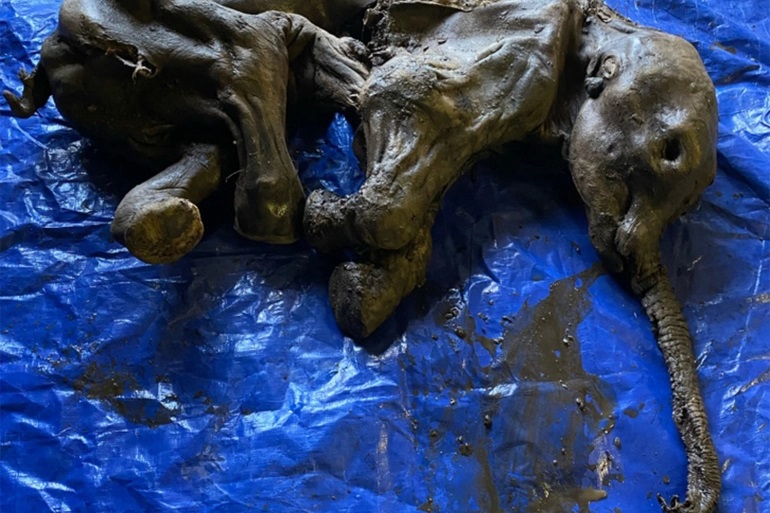
The mummified remains of a nearly intact baby woolly mammoth were discovered by miners in the Klondike gold fields of Canada’s far north last week.
Members of the local Tr’ondek Hwech’in First Nation named the calf Nun cho ga, which means “big baby animal.”
An amazing discovery: a near complete, mummified baby woolly #mammoth was found in the Klondike gold fields within Trʼondëk Hwëchʼin Traditional Territory.https://t.co/TqnwrVzIcQ pic.twitter.com/pNtuQl5hTu
— Nina Willburger (@DrNWillburger) June 24, 2022
Baby woolly mammoth retained skin and hair
Paleontologist Grant Zazula said in a statement on Saturday that the little tyke, which retained its skin and hair, “is beautiful and one of the most incredible mummified ice age animals ever discovered in the world.”
“I am excited to get to know her more,” he said.
The baby mammoth’s remains were discovered on June 21st during excavation through permafrost south of Dawson City in Canada’s Yukon territory, which borders the US state of Alaska.
The animal is believed to be female and would have died during the Ice Age over 30,000 years ago when woolly mammoths roamed the region alongside wild horses, cave lions, and giant steppe bison.
Zazula told the CBC broadcaster that Nun cho ga was probably about a month old when she died, most likely after getting stuck in the mud.
The discovery marks the first near-complete and best-preserved mummified woolly mammoth identified in North America.
A partial mammoth calf named Effie was found in 1948 at a gold mine in Alaska’s interior.
A 42,000-year-old mummified infant woolly mammoth, known as Lyuba, was also discovered in Siberia in 2007. Lyuba and Nun cho ga are roughly the same size, according to the Yukon government.
Scientists pledge to resurrect wooly mammoths
Scientists recently pledged to bring this species back from extinction with the help of gene editing.
George Church, a geneticist at Harvard and the Massachusetts Institute of Technology (MIT), told interviewers from the New York Times “This is a major milestone for us. It’s going to make all the difference in the world.”
Since woolly mammoths and Asian elephants—which, although endangered, still exist in the wild— share a common ancestor, which lived six million years ago, Church says he believes that he could rewrite the elephants’ DNA to produce an animal which is for all intents and purposes a mammoth using CRISPR.
Related: Humans vs. Woolly Mammoths vs. Climate Change
See all the latest news from Greece and the world at Greekreporter.com. Contact our newsroom to report an update or send your story, photos and videos. Follow GR on Google News and subscribe here to our daily email!



